|
29
There is always a seemingly infinite (endless) amount of information to be gathered (harvested)
from a single image (myth), especially as it has to be connected as if by spider thin threads of association to all the other words inherited by men and birds. Otherwise it could not be understood.
↕
↕
Therefore we should consider the site in the cosmic worldwide web for the central tree (Rakau) - the King (Pharaoh, Emperor, Ariki):
Rakau. Raau, medicine, remedy, drug. Ra'a'u, scratch on the skin. Rakau, a plant. R‚kau, goods, property. Vanaga. 1. Wood; rakau ta, cudgel, stick. Kauati. Pau.: to make fire. Mgv.: kounati, the plowed stick in fire-making. Ta.: auati, auai, stick used in fire-making. Mq.: koukati, koukani, the plowed stick. Viti: kaunita, to rub fire. Ma.: kauati, a fire-making stick. Churchill. ... You will notice that the wood is of a soft and spongy nature. It grows abundantly on these islands, and is a variety known as the Hibiscus tiliaceus, and called by the natives 'Purau' and 'Fau', pronounced 'Purow' and 'Fow', 'ow' being sounded as in the word 'how'. You can, if you wish, obtain large quantities of it, by going on board the vessels carrying oranges from these islands to San Francisco; the orange crates are mostly made of it ...
P Pau.: rakau, tree, to dress a wound. Mgv.: rakau, wood, timber, a tree; medicine, a remedy; an object. Mq.: Škau, wood, tree.
Ta.: raŠu, id. 2. Medicine, remedy, potion, ointment, furniture, any precious object, resources, baggage, riches, heritage, dowry, merchandise, treasure, wealth; rakau hakaneinei, purgative; rakau nui, rich, opulent; rakau kore, poor, beggar, indigent, miserable, an inferior; hakakamikami ki te rakau, to impoverish; rakau o te miro, ballast. Mq.: akau, anything in general. The medicine sense is particularized in Tonga, Nukuoro, Hawaii, Tahiti, Mangareva, Paumotu. In no other speech does wood stand so fully for wealth of possessions, but it will be recalled that Rapanui is destitute of timber and depends wholly upon driftwood. Churchill. ... There is a mill which grinds by itself, swings of itself, and scatters the dust a hundred versts away. And there is a golden pole with a golden cage on top which is also the Nail of the North. And there is a very wise tomcat which climbs up and down this pole. When he climbs down, he sings songs; and when he climbs up, he tells tales ... And myth is telling us clearly - this precious tree should stand tall at the climax of midsummer. ... Most of the people in our van took advantage of the interlude to shop at the nearby stalls set up by highland Maya who had come down to Tikal to take advantage of the steady supply of tourists. However, one of our group, Harriet Gillett, a retired physician and an inveterate bird-watcher, had other interests. She noticed a nearby tree hevy with white blossoms and surrounded by a raucous sphere of birds and bees. She climbed out of the van with her binoculars around her neck, and walked over to take advantage of the unexpected opportunity the morning had provided. Our local guide, Francisco FloriŠn, who knew the forest and its creatures in an unusually intimate way, joined her, explaining that the birds came to the tree only early in the morning. The sounds and the odd sight finally drew my attention and I too disembarked from the van and edged closer to the buzzing center of the action. I stared at the screaming birds as they fought for positions among the flowers and the hovering drone of thousands of bees. How beautiful, I thought, and then my gaze happened to settle on the trunk of the tree. It had thorns and it bulged just above the ground. It was a young ceiba tree. I already knew that the ceiba tree was the model for the sacred World Tree of the Maya, but I had never seen one in flower when I knew what I was looking at. I was really excited because normally you can't see the blossoms even if you're there when the tree is in blossom. The fully mature trees are hundreds of feet high. and the blossoms are very small. 'It's a ceiba', I chirped and began looking for a branch low enough to see one of the blossoms up close. Joyce Livingstone, a retired teacher, did the logical thing. She bent over, picked up a fallen branch, and held it out for me to see. I was too excited and full of myself to listen. She tapped my arm more insistently and still I didn't hear her. Finally, in frustration, she grabbed my wrist and raised her voice. 'Will you look at these?' she said, waving the branch, and finally I did. What I saw stunned me, for in her hand lay a perfect replica of the earflares worn by the Classic Maya kings. Suddenly I understood the full symbolism of so many of the things I had been studying for years. The kings dressed themselves as the Wakah-Chan tree, although at the time I didn't know it was also the Milky Way. The tzuk [partition] head on the trunk of the tree covered their loins. The branches with their white flowers bent down along their thighs, the double-headed ecliptic snake rested in their arms, and the great bird Itzam-Yeh stood on their head. I already knew as I stood under the young tree in Tikal that the kings were the human embodiment of the ceiba as the central axis of the world. As I stood there gazing at the flowers in Joyce's hand, I also learned that the kings embodied the ceiba at the moment it flowers to yield the sak-nik-nal, the 'white flowers', that are the souls of human beings. As the trees flowers to reproduce itself, so the kings flowered to reproduce the world ...
So in some way we should perceive a reflection of midsummer at Cb1-6:
By going back in precessional time-space to the Age of the Golden Bull we can translate the current place of Arcturus from October 22 (295 → 10 synodic lunar months) to 295 - 8 * 8 = 231 and then take away 60 (→ the basic Babylonian measure for the area of an irrigated field): 231 - 60 = 171. This construction of mine can then be connected by a thin thread of association to the overpowering image of Sleipner, the quick horse with 8 legs (↔ 2 heads):
Sleipner is carrying the god Odin - as in Wednesday (the day of Wooden → Mercury). Cfr the Swedish language Onsdag (= Wednesday) ↔ the day (dag) of Odin, Odin's dag, Onsdag. ... The first of all foreign visitors on Easter Island was the Dutch admiral Jacob Roggeveen., who approached the island in the evening twilight of Easter Sunday, 1722. As the sun rose above the sea next morning the Dutchmen brought their ships close inshore and observed a mixed crowd of fair-skinned and dark-skinned people who had lit fires before some enormous statues standing in a row. The people ashore were squatting in front of the statues, with their heads bent while they alternatively raised and lowered their arms. When the sun rose they prostrated themselves on the ground facing the sunrise, their fires still flickering before the stone colossi. The statues were even then so old and eroded that Roggeveen could with his bare fingers break pieces away from the decomposed surface, wherefore he concluded that the giant figures were simply molded from clay and soil mixed with pebbles. The Dutchmen left the island after a single day's visit ... And from 1 (in Russian odin means 1) we can add a week in order to reach 8 as in the number of legs in the horse of Mercury. Thus we can compare Sleipner with a great spider. ... In the beginning there was nothing but the sea, and above soared the Old-Spider ... The word Sleipner gives associations of one who is slipping away, like an Octo-pus (→ 8 feet) hiding in his ink. Hotu. Ta.: hotu, to produce fruit, Sa.: fotu, id. Mgv.: akahotu, the September season. Churchill. H.: Hoku, Night of the full moon. When this moon set before daylight it was called Hoku Palemo, Hoku that slips away. When it set after daylight it was called Hoku Ili, grounded Hoku ...
Heke. Hakaheke, to pull down, to overthrow. Mgv.: akaeke, to overthrow, to vanquish; heke, to fall down, to fall to pieces: akaheke; akahekeheke, to demolish. Mq.: heke, to crumble, to fall down; hakaheke, to demolish, to pull down. Churchill. Kai heke, hakaheke, to deflower. Kahukahu o heke, an octopus hiding in his ink. Mq.: ve'eve'e 'tentacules du heke'. Barthel 2. Pau.: Heke, to purge. Mgv.: heke-toto, hemorrhage. Ta.: hee, to purge. Mq.: heke, to drip. Ma.: heke, id. Pau.: Hekeheke, elephantiasis. Ta.: feefee, id. Mq.: fefe, id. Sa.: fe'efe'e, id. Mgv.: Heke, eke, octopus. Ta.: fee, id. Mq.: heke, feke, fee, id. Sa.: fe'e, id. Ma.: wheke, id. Ta.: Hee, to slide, to swim. Sa.: se'e, to slide, to shoot the breakers. Ha.: hee, id. Mq.: Hee oto, to cut. Sa.: sele, id. Ha.: helehele, id. Churchill. Ma.: 1. Migrate. Islands of History. 2. Rafter. Starzecka.
Spiders (and birds) live up in the air whereas heke (and fishes) can be found down in the sea.
... Now birds and fishes are born under the sign of the Yin, but they belong to the Yang. This is why birds and fishes both lay eggs. Fishes swim in the waters, birds fly among the clouds. But in winter, the swallows and starlings go down into the sea and change into mussels ... A square table of information (orientation) up at top left in the illustration for Odin riding on his 'Spider' (→ ke ku'uku'u) carries 5 (→ Sky) quite interesting numerical letters (among those 29 which I here can perceive):
171 should refer to June 20 (*91 = *88 + *3 = *83 + *8), where we can read in the G text that midsummer was bound to begin. 
... The twelve merry-men rush in a wild figure-of-eight dance around the fires, singing ecstatically and tearing at the flesh with their teeth ... The first figure 1 in 171 (in the square above) seems to have been designed to visualize a reversed stream of water at left (in the past), similar in form to the Greek letter λ and similar in meaning to the undulating water serpent on the north side of the pyramid of Kukulkan (→ ke ku'uku'u):
And surely also to the illustration in glyph number 29 on the G tablet, where the head has come off
and where the right arm at the back side has been converted into a gush of water.
Fforthermore, immediately after 7 (Λ)
is another (kť) figure 1 (i.e. after 17), where follows a pair of reversed reversals, possibly alluding to Gemini on the other side of the Milky Way river.
|


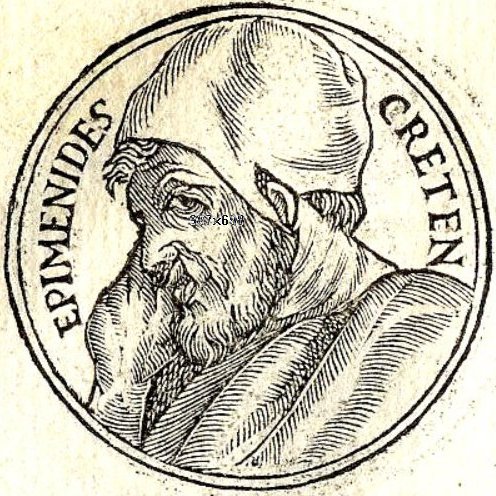
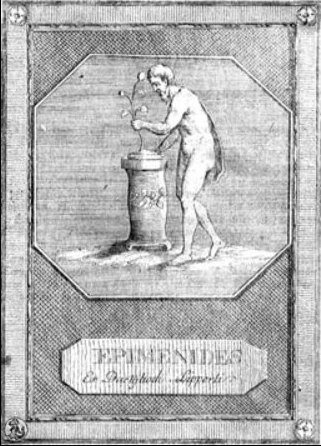
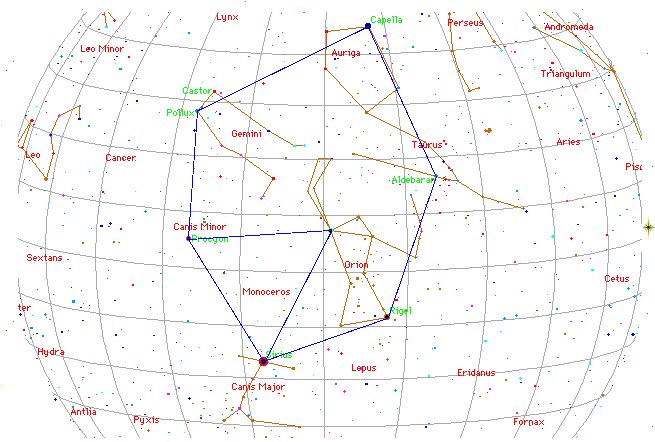

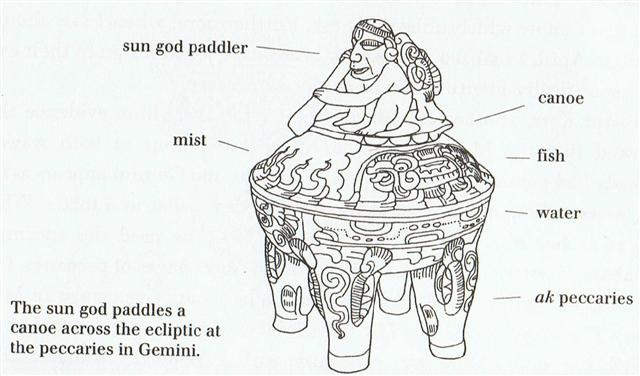


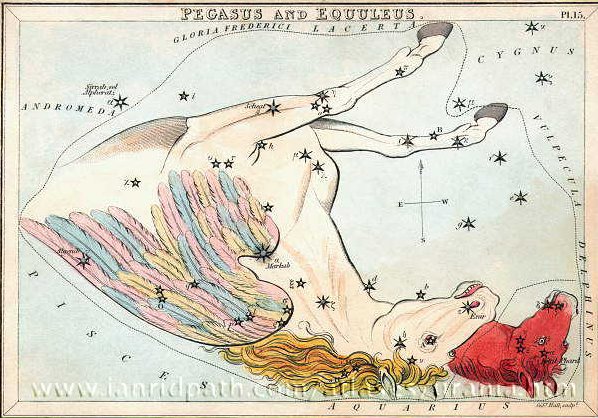

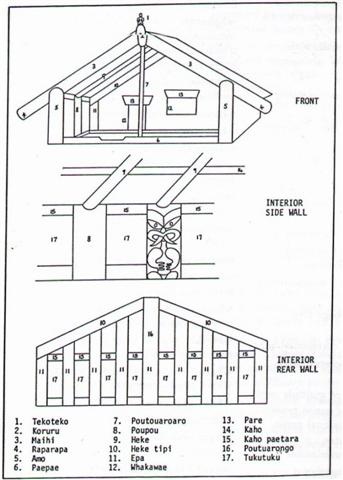



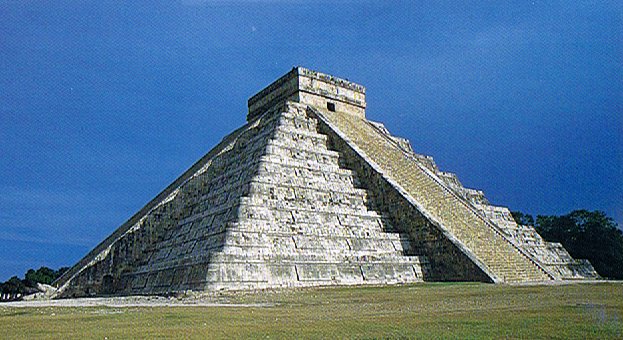



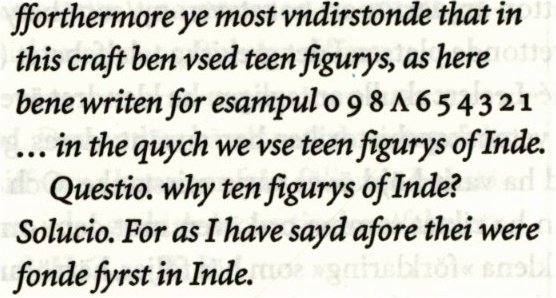
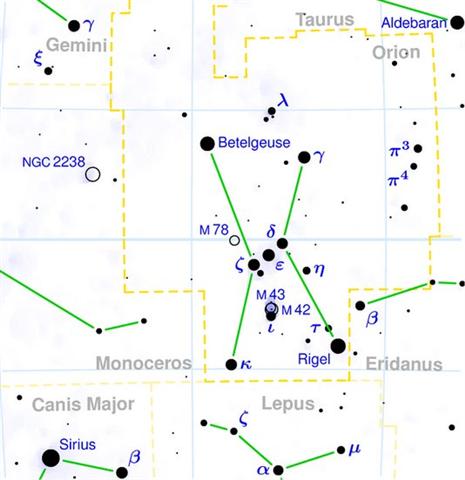
.jpg)